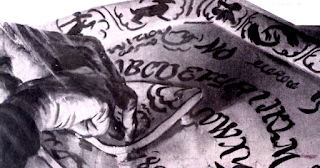There are a variety of ways that modern education, particularly among elementary school age groups, can become more interactive and engaging. Methods range from hands-on activities, both in and outside the classroom, to education through exposure to real-life scenarios and other activities that will help broaden the perspectives of young students.
However forward-thinking our methods of education are becoming today, it still probably isn’t a good idea to bring a Ouija board into the classroom and teach children how to use it.
This is precisely what happened at Zablocki Elementary School in Milwaukee, Wisconsin, when a teacher at the school purportedly used a Ouija board as a “prop” while telling scary stories to her students.
The incident was learned of by school officials following a complaint from the parents of one of the children in the classroom at the time, who claimed to be suffering from nightmares after the incident.
The teacher, explaining the circumstances to the child’s parent, said that the Ouija board had merely been used to illustrate scary stories in an imaginative way, and that she had not explicitly referred to the Ouija board as being used to communicate with “spirits”, as the devices are believed to be capable of doing.
Ouija boards, despite their arcane appearance, were originally created in the 1890s as a sort of parlor game by businessman Elijah Bond, and were subsequently mass produced and popularized by Bond’s employee, William Fuld. Rights to produce and package the boards as games were obtained by Parker Brothers in the 1960s. Despite their relatively recent origins, many historians have drawn comparisons between the boards and more ancient forms of divination and “planchette writing”, referring to the pointing device which is employed with the lettered Ouija board.
Huffington Post reported on a similar incident involving a Ouija board used in public schools back in 2012, when Theresa Clinton, a fourth grade teacher at Alafia Elementary School in Hillsborough, Florida, reportedly brought a Ouija board into the classroom. Clinton had brought the device to supplement a presentation of several books she had authored, one of them titled The Ouija Board Diaries: Summoning the Spirit.” The book, written for younger readers, tells the story of a student who moves into a new home and discovers she shares the space with the ghost of a deceased girl. She is able to communicate with the spirit using a Ouija board, as indicated in the book’s title.
Ouija boards have long held an air of mystery, along with an air of mischief, and even dread. Their popularity among spiritualist groups has been maintained since the early part of the twentieth century, although negative connotations have often been invoked in reference to the devices. In 1944, renowned esotericist Manly P. Hall had warned of their potential for causing unrest, as featured in a statement that appeared in Horizons Magazine:
During the last 20-25 years I have had considerable personal experience with persons who have complicated their lives through dabbling with the Ouija board. Out of every hundred such cases, at least 95 are worse off for the experience
Ouija boards are often referenced in popular films, notably in sequences that have appeared in films like The Exorcist and, more recently, the 2014 film Ouija and its 2016 prequel Ouija: Origin of Evil. Films like these have no doubt contributed to the notion that Ouija boards possess some malevolent potential, which may induce such things as demonic possession.
Rather than relying on spiritual sources for the Ouija’s alleged powers, modern science relies on what is called the ideomotor effect to explain the phenomenon, which is likely due to subconscious movements in response to psychological stimuli, which may lead the participant to believe that some external force is in control of the movement of the Ouija’s planchette.
While the Ouija board may have kept its mystique for some, let it be known here and now, for all, that it is still a generally bad idea to bring one into elementary school classrooms.
Source


No comments:
Post a Comment